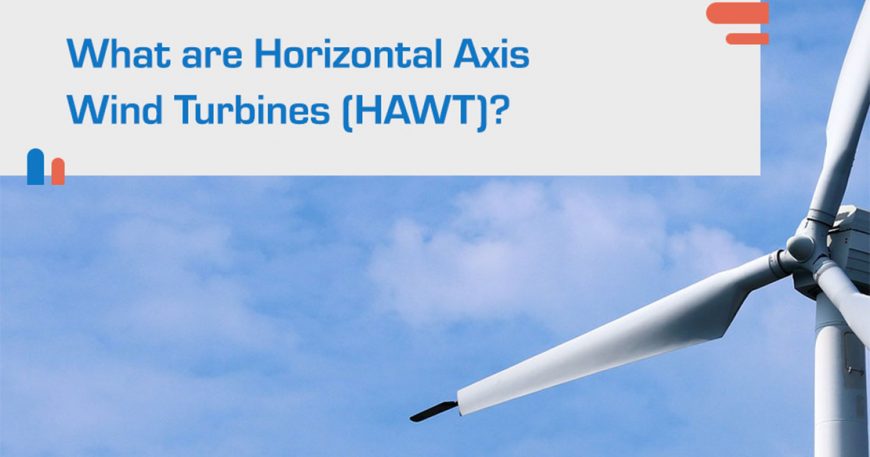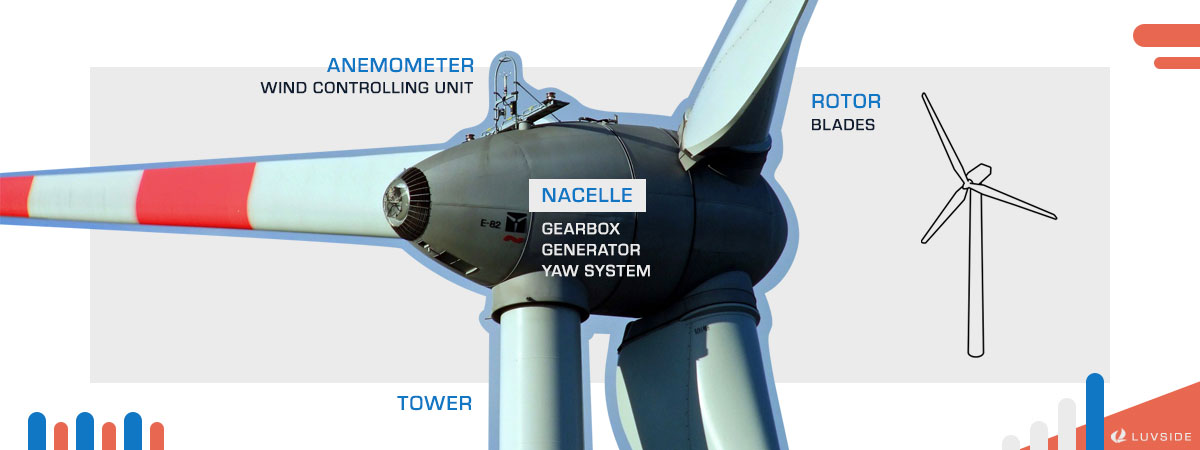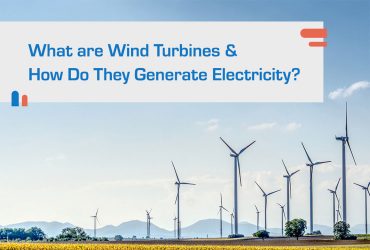With these mechanisms and physical features, horizontal axis wind turbines are able to achieve larger power output and higher energy efficiency perfect for large-scale wind power plants and electricity generation. Because of this, they dominate the wind power industry as the main solution for renewable energy.

How do horizontal wind turbines work?
Horizontal axis wind turbines are what most people picture when talking about wind turbines— the gigantic, white fans standing along the coastlines or across vast fields. Due to their high efficiency and large power output, they are the most commonly used turbines especially on commercial and industrial operation sites.
Common design of horizontal axis wind turbines
Horizontal axis wind turbines come with a few distinct physical features.
The Rotor and Blades
The rotor of a horizontal axis wind turbine includes three long blades connected to a horizontal shaft. Instead of being completely flat, the blades of the rotor are aerodynamically shaped like airplane wings, so that they can pick up the uplifting force from wind. The uplift force then generates a driving torque causing rotation. When receiving wind, the blades rotate like a fan.
Typical modern horizontal axis wind turbines have diameters of 40 to 90 meters long.
The Nacelle
Connected with the rotor, the nacelle houses the operational components supporting the electricity generator of a wind turbine. These include the gearbox, the generator, the brake, and the controller.
The Gearbox
The rotor usually rotates at a lower speed. The gearbox, located between the rotor and the generator, turns the slow rotation of the blades into a quicker rotation that is more suitable to drive an electrical generator. On average, while the rotor turns at a 20 rpm speed, the generator requires 1000 rpm to generate electricity.

The Wind Controlling Unit
On the back of the nacelle, an external anemometer is responsible for measuring the incoming wind speed and wind direction. The wind speed data will be transmitted to the controller inside the back of the nacelle.
Based on the data received, the controller decides whether to shut down the wind turbine for safety or emergency concerns. It also determines the orientation of the rotor, making sure the blades are receiving incoming wind at the optimal angle.
The Tower
To capture higher wind speed and avoid turbulent layers of air close to the ground, the rotor and nacelle of a horizontal axis wind turbine must be elevated and placed on top of a tower. While there is no definite standard, the tower height is usually somewhere between two to three times the length of the blades to achieve optimal balance between energy yield and cost.
The Yaw System
Located on top of the tower and connected with the nacelle, the yaw system aligns the turbines towards the wind. This ensures that the wind turbine always faces the incoming wind, which is necessary for the rotor blades to pick up wind and start rotating.
Designed for large-scale wind power generation
Related Content
The energy transition has already reached urban areas. In addition to solar modules on roofs and green façades, small wind turbines are increasingly being considered...
Since centuries ago, humans have learned to utilize wind power for activities ranging from everyday tasks like grinding grains to long-distance traveling such as sailing....

